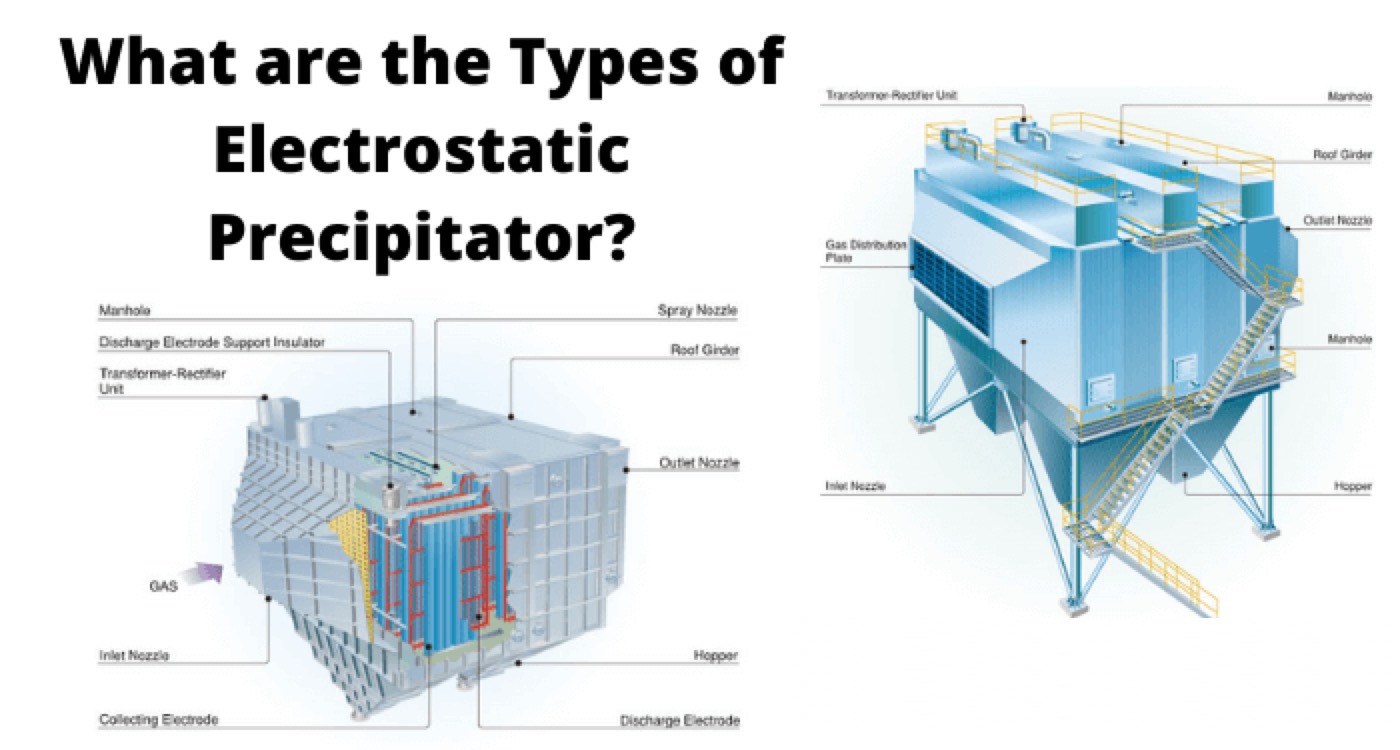Types of Electrostatic Precipitator

The world is slowly but continually moving towards a greener future. There is much excitement among engineers about the prospects of greener technology. However, coal-based power plants are still the primary source of electrical power in many countries. Baring few countries in the world like Norway or Iceland, all other countries depend heavily on coal to produce the bulk of the electricity demand. Coal necessitates that we use some technology to reduce the pollution that is caused by such power plants. Electrostatic precipitator does exactly that. Electrostatic precipitator uses an electrostatic field to remove pollution causing particles from a flowing gas such as air. They are one of the best filtration devices and can remove fine particulate matter such as dust and smoke from the air stream. They have now become mandatory in a thermal power plant.
The particles flowing in a stream of air are charged by ionization and then made to flow between charged electrodes. The particles and the electrodes have opposite charge. This causes the pollutant particles to get attracted towards the electrode plates, and they are collected there. The clean air moves out of the electrostatic precipitator. The pollutants are collected separately in a hopper by hammering the plates.
There are different types of the electrostatic precipitator, and we will study about each of them one by one:
Dry Electrostatic Precipitator
It collects the pollutants, also known as ash or cement, in a dry state hence known by that name. The precipitator collects the dust particles from a stream of air. The particles are first ionized so that they become electrically charged. Later they are made to flow through oppositely charged electrodes where the particles are collected by the electrodes. The dust particles are collected by hammering the electrodes. They are collected in a hopper where they can be extracted out. They are used for removing dirt from flue gases in thermal power plants. They are also used to clean the air in ventilation and air condition systems.
Wet Electrostatic Precipitator
Wet electrostatic precipitators are used to remove wet particles such as resin, oil, paint, tar, acid or anything that is not dry in the conventional sense. They are used in industrial applications where the potential for explosion is high. They are used for particles with high resistivity or high corrosive nature. The particles in a wet electrostatic precipitator are given an electric charge when they pass through a corona. In other words, the particles are ionized, just like in Dry ESPs. The difference lies in the collector (electrodes). The collectors are continuously sprayed with a liquid, generally water. Thus the particles collected from a sludge. The sludge is collected and treated separately. They can be used for particles which cannot be separated by dry ESPs. They have higher efficiency than dry ESPs. The continuous or intermittent washing with a liquid eliminates the entertainment of particles due to rapping which dry ESPs are subject to.
Statement: Respect the original, good articles worth sharing, if there is infringement please contact delete.
Electrical4U is dedicated to the teaching and sharing of all things related to electrical and electronics engineering.













